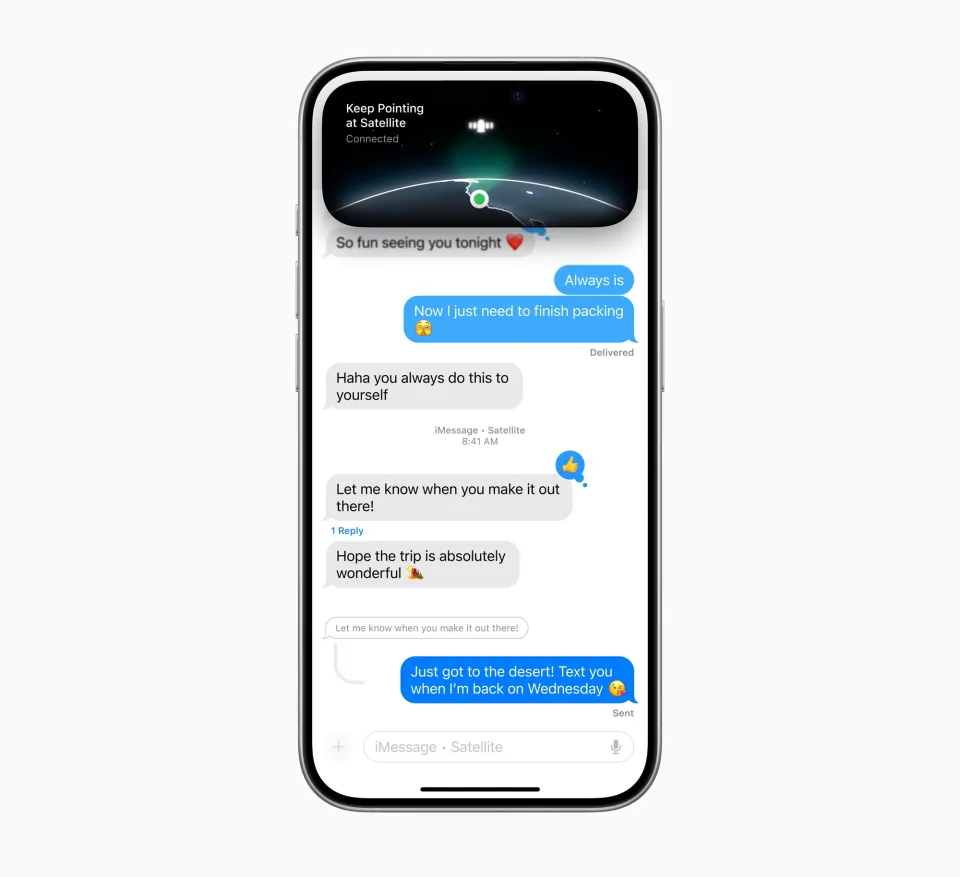At Apple’s recent Worldwide Developers Conference, while the spotlight shone on Apple Intelligence, another groundbreaking announcement quietly stole the show. Set to debut alongside iOS 18 for iPhone 14 and 15 models, Apple will roll out a new messaging capability that operates via satellite.

Enhanced Connectivity Beyond Cell Service
The new feature, aptly named Messages via satellite, aims to keep users connected even in remote areas devoid of cellular coverage. Unlike Apple’s existing Emergency SOS via satellite, which focuses on critical situations, this innovation allows users to send standard iMessages to fellow iPhone users and SMS messages to Android devices.
How It Works
During a live demo with Kurt Knight, Apple’s senior director of platform product marketing, the functionality of Messages via satellite was showcased. Even without cellular or Wi-Fi, users can access this feature directly from their iPhone’s lock screen. A notification prompts users when a satellite connection is available, enabling them to send and receive messages, utilize emergency services, or track their location via the Find My app.
Practical Limitations
However, the feature does come with limitations. It necessitates an unobstructed view of the sky, meaning it won’t work indoors or in heavily wooded areas. Despite these constraints, Knight demonstrated its surprising speed and reliability during the demo, successfully sending texts and emojis in real-time.
What You Need
To utilize Messages via satellite, users will require an iPhone 14 or newer with iOS 18 installed, set to launch later this year. Apple initially offered a complimentary year of service to iPhone 14 users, which extended into 2023, and iPhone 15 owners received a similar offer upon purchasing their devices.
Conclusion
As Apple continues to innovate, Messages via satellite represents a significant step towards enhancing communication resilience, ensuring users can stay connected regardless of traditional network availability. While it may not support multimedia messages initially, its potential to bridge communication gaps in remote or emergency situations is undeniable.








